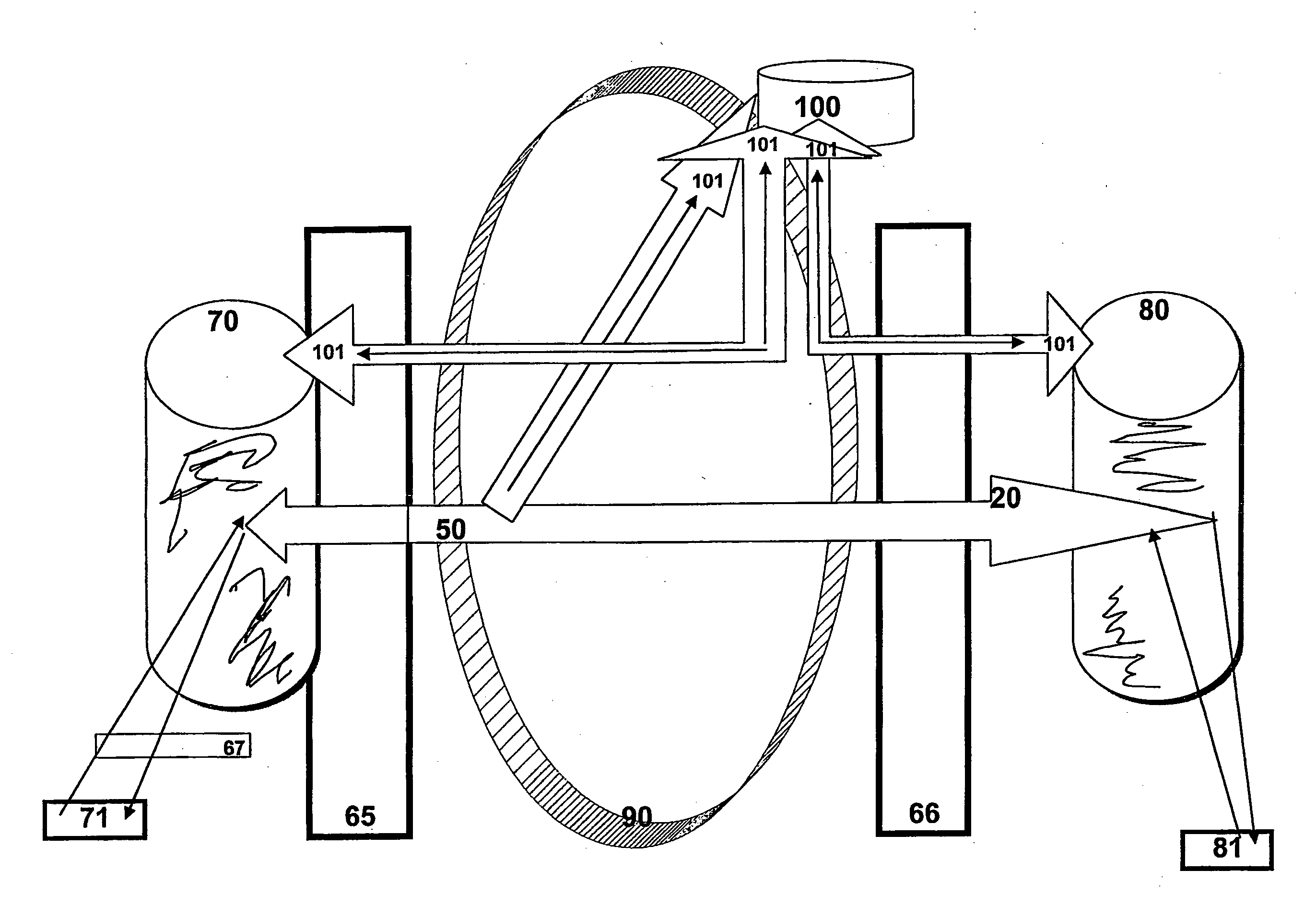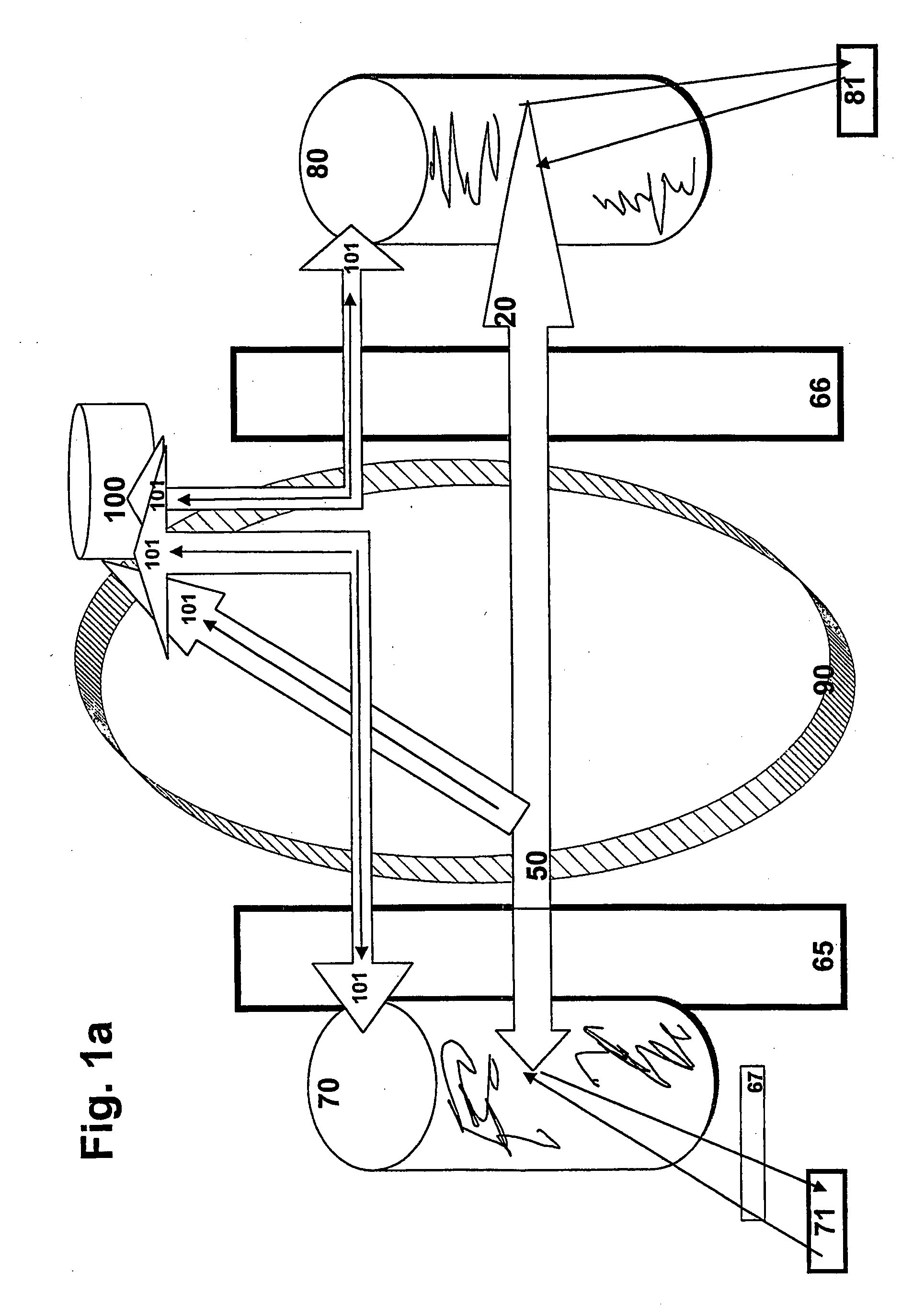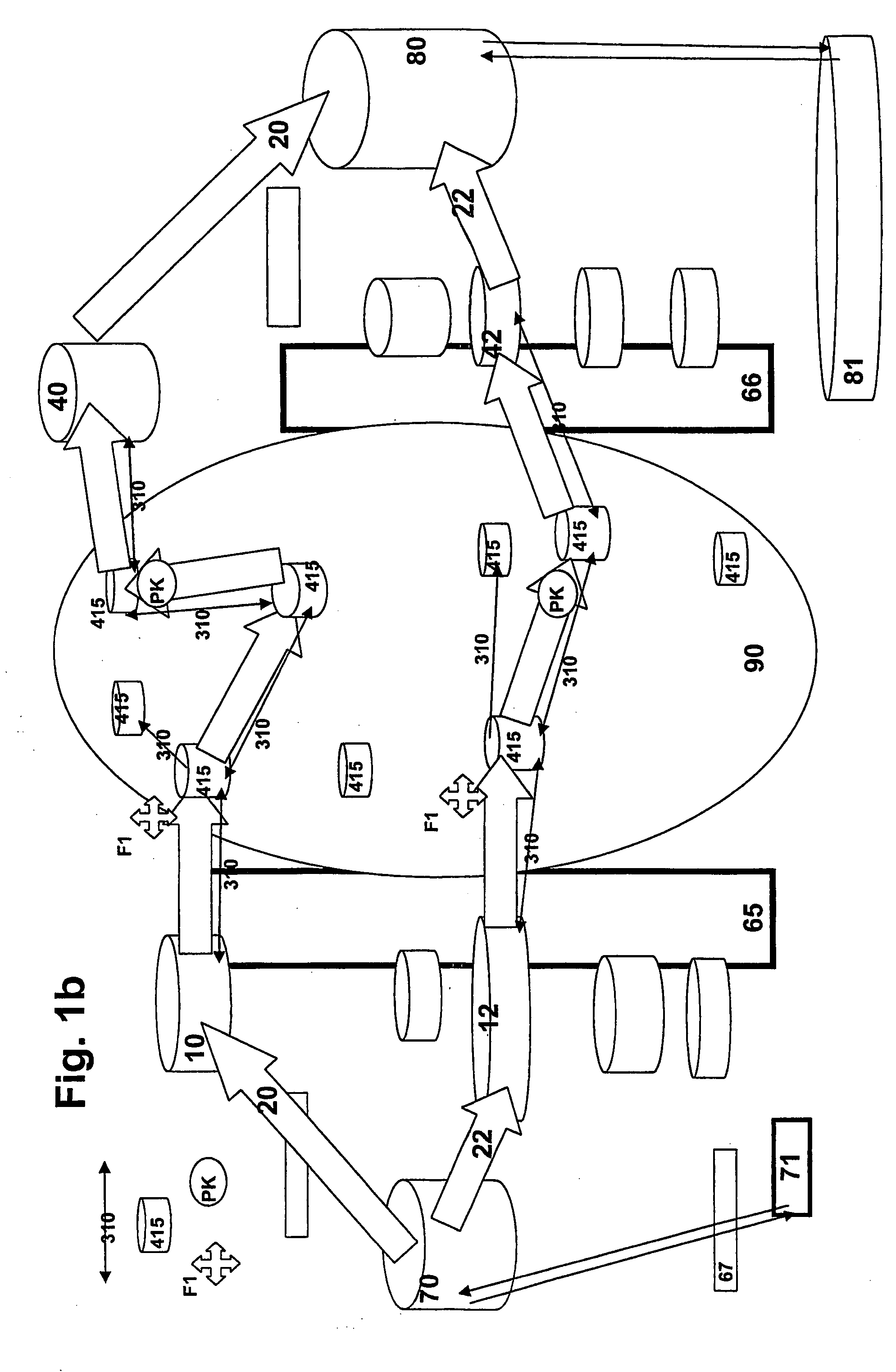Method and device for transferring digital information
a digital information and transfer method technology, applied in the direction of digital transmission, data switching network, electrical apparatus, etc., can solve the problems of limiting the user's mobility, 3g telephony, and the line used is totally vulnerable to eavesdropping
- Summary
- Abstract
- Description
- Claims
- Application Information
AI Technical Summary
Benefits of technology
Problems solved by technology
Method used
Image
Examples
Embodiment Construction
[0107]The invention comprises an entire Information packet sent by an Information provider 71 to a Transformer 70, consisting of a computer or the like, where the Information packet is processed in the Transformer and sent on via Transmitting / Receiving devices 10-14 in the form of multiple randomized Transmissions that are staggered and sent in batches to the Transmitting / Receiving devices 40-44, whose receiving function is not specified in advance for a certain Transmission 20-24, where the Earmarking (indication of intended destination) to the specific Transmitting / Receiving device 40-44 among a number of such Transmitting / Receiving devices 40-44 defined in advance, has been randomized by Transformer 70 and where the Earmarking is known only to the parties to the Transmission.
[0108]The invention includes a method whereby the receiving Transformer 80 is to identify the origin of Transmissions 20-24 associated with a certain original Information packet from 71, despite the randomiza...
PUM
 Login to View More
Login to View More Abstract
Description
Claims
Application Information
 Login to View More
Login to View More - R&D
- Intellectual Property
- Life Sciences
- Materials
- Tech Scout
- Unparalleled Data Quality
- Higher Quality Content
- 60% Fewer Hallucinations
Browse by: Latest US Patents, China's latest patents, Technical Efficacy Thesaurus, Application Domain, Technology Topic, Popular Technical Reports.
© 2025 PatSnap. All rights reserved.Legal|Privacy policy|Modern Slavery Act Transparency Statement|Sitemap|About US| Contact US: help@patsnap.com



